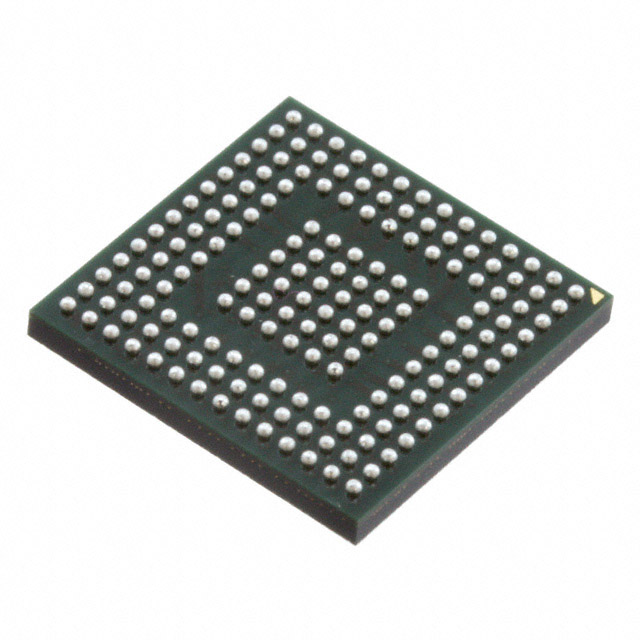TMS320C6678ACYPA25
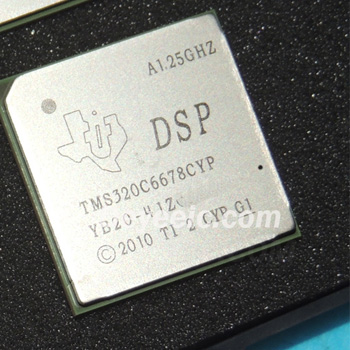
- Part No.:
- TMS320C6678ACYPA25
- Manufacturer:
- Texas Instruments
- Category:
- The Posts
- Package:
- Datasheet:
-
 TMS320C6678ACYPA25.pdf
TMS320C6678ACYPA25.pdf
- Description:
- IC DSP FIX/FLOAT POINT 841FCBGA
- Quantity:
Unit Price:$0
Ext Price:$0
Product details
- Details
- Specifications
- FAQ
- Product Comparison
- Related Categories
The TMS320C6678ACYPA25 is a high-performance multicore digital signal processor (DSP) from Texas Instruments (TI),
based on the innovative KeyStone multicore architecture. This device integrates eight C66x CorePac DSP cores, each capable of running at up to 1.25GHz,
delivering an aggregate performance of 320 GMAC (fixed-point) and 160 GFLOP (floating-point) computational power.
The memory architecture of the TMS320C6678ACYPA25 is robustly designed, featuring:
-
32KB L1P program cache and 32KB L1D data cache per DSP core
-
512KB dedicated L2 cache for each core
-
4MB shared L2 cache for inter-core communication
-
On-chip memory resources including 128kB ROM and 8.5MB RAM
-
Support for up to 8GB addressable DDR3 external memory via a 64-bit DDR3-1600 interface.
The processor comes in an 841-pin FCBGA package (24x24mm) and operates within an industrial temperature range of -40°C to 100°C.
It features a core voltage of 1.0V with I/O voltages supporting 1.0V, 1.5V, and 1.8V standards.
Advanced power management techniques including multiple power domains and dynamic voltage/frequency scaling (DVFS) enable optimal energy efficiency.
Key Functional Features
Multicore Processing Capability
The TMS320C6678ACYPA25's eight C66x DSP cores can operate independently or collaboratively through
TI's Multicore Navigator and TeraNet switch fabric (with 2TB/s bandwidth).
This architecture excels in parallel signal processing algorithms like multi-channel baseband processing and large-scale matrix operations.
Each core delivers up to 5.0 GMAC/s at 1.25GHz, resulting in the chip's impressive 320GMAC fixed-point and 160GFLOP floating-point performance.
High-Speed Interfaces
The processor integrates multiple high-speed serial interfaces:
-
Quad-channel SRIO 2.1 (5Gbaud full-duplex per channel)
-
Dual-channel PCIe Gen2 (5Gbaud per channel)
-
HyperLink (50Gbaud full-duplex)
-
Two SGMII Ethernet ports supporting 10/100/1000Mbps operations.
Dedicated Acceleration Engines
Beyond the DSP cores, the chip includes specialized hardware accelerators:
-
Network coprocessor (Packet Accelerator)
-
Security accelerator (supporting AES, DES/3DES, SHA algorithms)
-
Telecom-specific peripherals including two Telecom Serial Interface Ports (TSIP).
Development Support
TI provides comprehensive software development tools:
-
Code Composer Studio (CCS) IDE
-
DSP/BIOS real-time OS
-
Multicore Software Development Kit (MCSDK)
-
Extensive algorithm libraries
-
Backward compatibility with TI's TMS320C6000 DSP family.
Typical Application Scenarios
Communications Infrastructure
The TMS320C6678ACYPA25 is ideal for 5G base stations, media gateways,
and IMS media servers. Its multicore architecture efficiently handles multi-channel baseband signals,
with each DSP core processing different user streams.
When combined with FPGAs or ASICs via SRIO/PCIe interfaces, it forms complete physical layer solutions.
TI documentation shows the C6678 can triple channel density in media gateways compared to previous generations.
Radar and Aerospace
In phased array radars, electronic warfare systems, and satellite communications,
this processor performs real-time multi-channel radar echo processing, executing pulse compression,
moving target detection (MTD), and constant false alarm rate (CFAR) algorithms.
Its floating-point capability is particularly suited for radar signal processing requiring high dynamic range.
Medical Imaging
The processor's floating-point performance makes it suitable for ultrasound imaging, CT reconstruction, and MRI signal processing.
The multicore architecture allows different processing stages to be assigned to different cores, creating efficient processing pipelines.
Industrial Inspection and Automation
In machine vision, industrial CT, and high-speed quality inspection systems,
the TMS320C6678ACYPA25 processes high-resolution images in real-time for feature extraction,
pattern recognition, and defect detection. Its high-speed interfaces connect directly to industrial cameras and sensors.
Audio/Video Processing
Supporting codecs like H.264, H.265, MPEG4, and audio algorithms including echo cancellation and noise suppression,
the processor handles multiple HD video streams simultaneously. I
n video conferencing systems, it performs real-time multi-channel HD video encoding/decoding,
while in broadcast equipment, it accomplishes video transcoding and special effects processing.
Domestic (Chinese) Alternative Models
Rockchip RK3399
While based on ARM architecture rather than traditional DSP,
the hexa-core big.LITTLE design (dual Cortex-A72 + quad Cortex-A53) excels in multimedia processing and edge computing.
It supports 4K video codecs and features powerful graphics capabilities with interfaces including USB 3.0, PCIe, and M.2. Compared to the C6678,
RK3399 benefits from a richer software ecosystem (Linux/Android support) and lower power consumption, though it may lag in pure DSP algorithm efficiency.
Huawei Ascend 310
Optimized for AI computing with Huawei's Da Vinci architecture, the Ascend 310 delivers up to 256TOPS INT8 performance.
While primarily targeting AI inference, its strong parallel processing and floating-point capabilities can handle certain DSP tasks,
particularly those requiring massive parallel computation. Built on 16nm process technology,
it supports FP16 and INT8 calculations and finds applications in autonomous driving and industrial automation.
CAS SX-DSP Series
Developed by the Chinese Academy of Sciences, the SX-DSP series targets communications, radar, and audio/video processing.
Using a proprietary multicore architecture with up to 1.2GHz clock speed, it supports large on-chip memory and high-speed external memory interfaces.
These processors are mainly deployed in military and aerospace applications requiring complete technological independence.
Ingenic ADSP Series
Ingenic's ADSP series represents one of China's few floating-point capable DSP products, targeting industrial control,
power electronics, and motor control applications. While specific performance metrics aren't public,
these chips have achieved import substitution in multiple fields. Compared to C6678,
ADSP may have advantages in high-precision control algorithms but potentially less raw computing power.
NationalChip GX Series
Focusing on audio/video processing and communications, NationalChip's GX series supports multiple audio/video codec standards.
These low-power, highly integrated chips are widely used in set-top boxes and video surveillance systems,
making them more suitable for consumer multimedia applications than high-performance scientific computing.
Table: Key Parameter Comparison Between TMS320C6678ACYPA25 and Chinese Alternatives
| Model | Architecture | Core Count | Frequency | Floating-Point Performance | Typical Applications | Advantages | Disadvantages |
|---|---|---|---|---|---|---|---|
| Rockchip RK3399 | ARM Cortex-A72/A53 | 6 (2+4) | 1.8GHz | NEON-dependent | Video surveillance, edge computing | Rich ecosystem, multimedia | Non-traditional DSP |
| Huawei Ascend 310 | Da Vinci architecture | N/A | N/A | 256TOPS (INT8) | AI inference, autonomous driving | Powerful AI compute | Limited traditional DSP support |
| CAS SX-DSP | Proprietary DSP | Multicore | 1.2GHz | Comparable to C6678 | Military, aerospace | Fully independent | Weaker software ecosystem |
| Ingenic ADSP | Proprietary DSP | Single/Multi | Undisclosed | Floating-point support | Industrial control | High-precision control | Moderate compute performance |
| NationalChip GX | Proprietary DSP | Undisclosed | Undisclosed | Limited support | Audio/video | Low power, high integration | Weak in HPC |
Chinese alternatives offer advantages in cost, supply chain security, and technological independence,
reducing reliance on foreign suppliers. However, they may trail in technical maturity, software ecosystems,
and development tool support, particularly in complex multicore programming, real-time debugging, and specialized algorithm libraries.
International Alternative Models
TI's Own Product Line
-
TMS320C6657: Dual-core C66x version at 1.25GHz, offering better cost-performance for medium-performance applications.
-
TMS320C6655: Low-power dual-core C66x DSP (850MHz-1.25GHz) for power-sensitive applications.
-
TMS320C6674: Quad-core C66x DSP with about half the performance of C6678, balancing performance and cost.
Analog Devices (ADI) SHARC Series
-
ADSP-SC58x: Heterogeneous processor combining dual SHARC cores with ARM Cortex-A5, offering strong floating-point performance for audio and industrial control.
-
ADSP-2148x: High-performance floating-point DSP for professional audio and sonar applications requiring high-precision computation.
NXP Layerscape Series
-
LS2088A: Octa-core ARM Cortex-A72 processor that can substitute DSPs in certain signal processing applications.
Xilinx Zynq UltraScale+ RFSoC
This heterogeneous platform combines ARM processors, FPGA, and high-speed data converters,
potentially replacing DSP+FPGA solutions in wireless communications and radar systems.
Compared to Chinese alternatives, these international models typically offer more mature software development tools and richer algorithm library support,
though they may be disadvantaged in price and supply chain security.
Considerations for Alternative Selection
When selecting alternatives to TMS320C6678ACYPA25, consider these key factors:
Performance Matching
Evaluate the alternative's core count, clock speed, floating/fixed-point performance,
and memory bandwidth. For compute-intensive applications, pay special attention to parallel processing capabilities and memory subsystem performance.
Interface Compatibility
Verify whether alternatives provide required high-speed interfaces like SRIO, PCIe,
or HyperLink. Designs using C6678's unique HyperLink for multi-chip interconnection may require architectural redesigns.
Software Ecosystem
Assess the alternative platform's development tools, OS support, and algorithm libraries.
TI provides comprehensive environments like CCS, DSP/BIOS, and MCSDK for C6678-domestic alternatives may require adaptation to new workflows.
Power and Thermal
Compare power metrics and thermal requirements against product specifications. Some Chinese alternatives using more advanced process nodes may offer power advantages.
Supply Chain Stability
Consider the alternative's lead time, procurement channels, and long-term availability guarantees,
especially given global chip supply fluctuations. Domestic alternatives typically offer more secure supply chains.
Cost Factors
Evaluate chip pricing, development costs, and system redesign expenses.
While Chinese alternatives often have price advantages, they may require additional development investment.
Special Requirements
For applications involving national security or critical infrastructure,
technological independence may be paramount, favoring domestic alternatives like the CAS SX-DSP series.
Conclusion and Selection Recommendations
The TMS320C6678ACYPA25 remains a flagship multicore DSP with its 8-core C66x architecture,
powerful floating-point performance, and rich high-speed interfaces,
maintaining importance across communications, radar, medical imaging, and other fields.
However, engineers should understand alternative options due to technological evolution and supply chain considerations.
For projects emphasizing technological independence and supply chain security,
Chinese alternatives like the CAS SX-DSP series or Huawei Ascend 310 merit consideration.
These chips approach C6678's performance with cost and availability advantages,
though their software ecosystems may require evaluation.
For traditional signal processing still requiring international vendor chips,
TI's own C6657 (dual-core) or C6674 (quad-core) derivatives, or ADI's SHARC floating-point DSPs offer better software compatibility and easier migration.
For emerging AI-enhanced signal processing,
Huawei's Ascend 310 or other AI-focused processors may provide superior performance in algorithmically suitable applications.
Ultimately, selection should be guided by specific application requirements,
weighing performance needs against factors like development resources, supply chain risks, and long-term maintenance considerations.
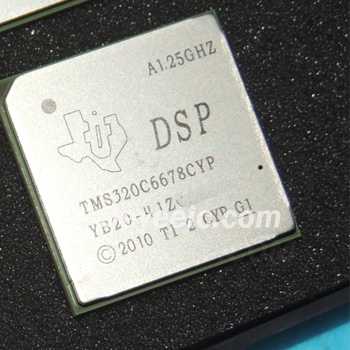
- Package/Case:
- Packaging:
- Bulk,Tray
- Series:
- TMS320C66x
- ProductStatus:
- Active
- Type:
- Fixed/Floating Point
- Interface:
- EBI/EMI, I²C, PCIe, SPI, TSIP, UART, 10/100/1000 Ethernet
- ClockRate:
- 1.25GHz
- Non-VolatileMemory:
- ROM (128kB)
- On-ChipRAM:
- 8.5MB
- Voltage-I/O:
- 1.0V, 1.5V, 1.8V
- Voltage-Core:
- 1.00V
- OperatingTemperature:
- -40°C ~ 100°C (TC)
- MountingType:
- Surface Mount
- Category:
- The Posts
- Datasheet:
-
 TMS320C6678ACYPA25.pdf
TMS320C6678ACYPA25.pdf
1. How to order TMS320C6678ACYPA25 on Deyee Tech Limited?
Currently, Deyee Tech Limited only provide peer-to-peer order processing. While you submit the RFQ, our professional agent will contact you with the competitive prices in the global market, and our agent will prompt you to finish the order if you accept our offers.
2. How does Deyee Tech Limited guarantee that TMS320C6678ACYPA25 is from the original manufacturer or authorized agents?
We have a professional and experienced quality control team to strictly verify and test the TMS320C6678ACYPA25. All suppliers must pass our qualification reviews before they can publish their products including TMS320C6678ACYPA25 on Deyee Tech Limited; we pay more attention to the channels and quality of TMS320C6678ACYPA25 products than any other customer. We strictly implement supplier audits, so you can purchase with confidence.
3. Are the TMS320C6678ACYPA25 price and inventory displayed accurate?
The price and inventory of TMS320C6678ACYPA25 fluctuates frequently and cannot be updated in time, it will be updated periodically within 24 hours. And, our quotation usually expires after 5 days.
4. What forms of payment are accepted?
Wire Transfer, PayPal, Alipay, Wechat, Credit Card, Western Union, MoneyGram, and Escrow are all acceptable.
Warm Tips: Some orders in certain payment forms may require handling fee.
5. How is the shipping arranged?
Customers can choose industry-leading freight companies, including DHL, UPS, FedEx, TNT, and Registered Mail. Shipping insurance is also available.
Once your order has been processed for shipment, our salesperson will send you an email advising you of the shipping status and tracking number.
Warm Tips: It may take up to 24 hours for the carriers to display tracking information. Usually, express delivery takes 3-5 days, and registered mail takes 25-60 days.
6. What is the process for return or replacement of TMS320C6678ACYPA25?
All goods will implement Pre-Shipment Inspection (PSI), selected at random from all batches of your order to do a systematic inspection before arranging the shipment. If there is something wrong with the TMS320C6678ACYPA25 we delivered, we will accept the replacement or return of the TMS320C6678ACYPA25 only when all of the below conditions are fulfilled:
(1)Such as a deficiency in quantity, delivery of wrong items, and apparent external defects (breakage and rust, etc.), and we acknowledge such problems.
(2)We are informed of the defect described above within 90 days after the delivery of TMS320C6678ACYPA25.
(3)The PartNo is unused and only in the original unpacked packaging.
Two processes to return the products:
(1)Inform us within 90 days
(2)Obtain Requesting Return Authorizations
7.How to contact us to get technical supports, such as TMS320C6678ACYPA25 pin diagram, TMS320C6678ACYPA25 datasheet?
If you need any after-sales service, please do not hesitate to contact us.
| Image | 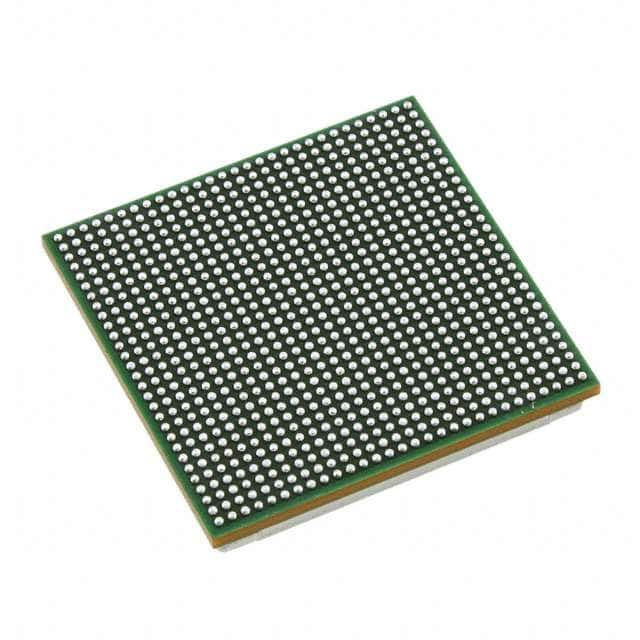 |
 |
 |
 |
 |
| Part Number | TMS320C6670ACYPA2 | TMS320C6670ACYP2 | TMS320C6652CZH6 | TMS320C6657CZHA | TMS320C6657CZHA25 |
| Manufacturer | Texas Instruments | Texas Instruments | Texas Instruments | Texas Instruments | Texas Instruments |
| Package/Case | |||||
| Packaging | Bulk,Tray | Bulk,Tray | Bulk,Tray | Bulk,Tray | Bulk,Tray |
| Series | TMS320C66x | TMS320C66x | TMS320C66x | TMS320C66x | TMS320C66x |
| ProductStatus | Active | Active | Active | Active | Active |
| Type | Fixed/Floating Point | Fixed/Floating Point | Fixed/Floating Point | Fixed/Floating Point | Fixed/Floating Point |
| Interface | EBI/EMI, I²C, PCIe, SPI, TSIP, UART, 10/100/1000 Ethernet | EBI/EMI, I²C, PCIe, SPI, TSIP, UART, 10/100/1000 Ethernet | EBI/EMI, I²C, PCIe, SPI, TSIP, UART, 10/100/1000 Ethernet | EBI/EMI, I²C, PCIe, SPI, TSIP, UART, 10/100/1000 Ethernet | EBI/EMI, I²C, PCIe, SPI, TSIP, UART, 10/100/1000 Ethernet |
| ClockRate | 1.25GHz | 1.25GHz | 1.25GHz | 1.25GHz | 1.25GHz |
| Non-VolatileMemory | ROM (128kB) | ROM (128kB) | ROM (128kB) | ROM (128kB) | ROM (128kB) |
| On-ChipRAM | 8.5MB | 8.5MB | 8.5MB | 8.5MB | 8.5MB |
| Voltage-I/O | 1.0V, 1.5V, 1.8V | 1.0V, 1.5V, 1.8V | 1.0V, 1.5V, 1.8V | 1.0V, 1.5V, 1.8V | 1.0V, 1.5V, 1.8V |
| Voltage-Core | 1.00V | 1.00V | 1.00V | 1.00V | 1.00V |
| OperatingTemperature | -40°C ~ 100°C (TC) | -40°C ~ 100°C (TC) | -40°C ~ 100°C (TC) | -40°C ~ 100°C (TC) | -40°C ~ 100°C (TC) |
| MountingType | Surface Mount | Surface Mount | Surface Mount | Surface Mount | Surface Mount |
- Integrated Circuits (ICs)(722936)
- RF/IF and RFID(73839)
- Discrete Semiconductor Products(253071)
- Connectors, Interconnects(1885586)
- Power Supplies - Board Mount(69900)
- Inductors, Coils, Chokes(159901)
- Isolators(22491)
- Resistors(0)
- Relays(65894)
- Capacitors(0)
- Audio Products(11654)
- Sensors, Transducers(179704)
- Circuit Protection(300347)
- Industrial Supplies(0)
- Transformers(18885)
- Tools(0)
- Test and Measurement(0)
- Tapes, Adhesives, Materials(0)
- Switches(0)
- Anti-Static Control, ESD, Clean Room Products(0)
TMS320C6678ACYPA25 Relevant information
- Popular Search
- Include Parts
The following parts are popular search parts in The Posts.
The following parts include "TMS320C6678ACYPA25" in ISSI, Integrated Silicon Solution Inc“TMS320C6678ACYPA25”.
- Part Number
- Manufacturer
- Package
- Description
In Stock:2,720
Please send RFQ..please send RFQ , we will respond immediately.

-
AK7738VQ
Asahi Kasei Microdevices/AKM

-
ADSP-BF592KCPZ
Analog Devices Inc.
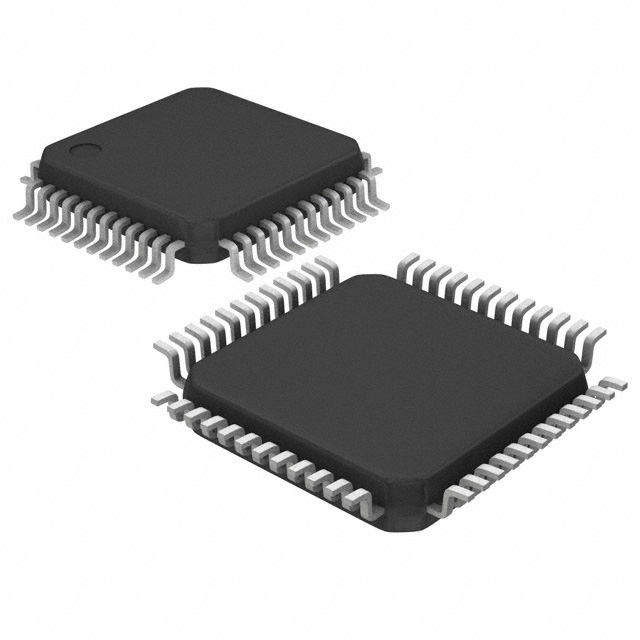
-
ADAU1701JSTZ
Analog Devices Inc.
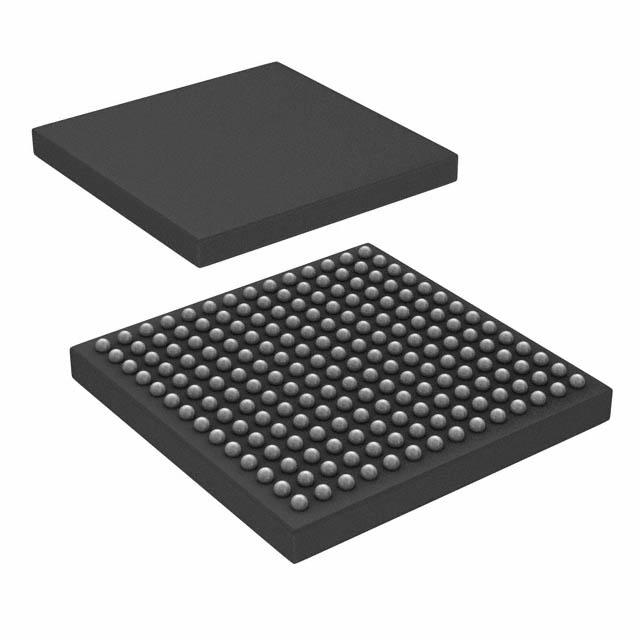
-
TMS320C5517AZCHA20
Texas Instruments

-
ADSP-BF504BCPZ-4
Analog Devices Inc.
-
ADSP-BF512BBCZ-4
Analog Devices Inc.
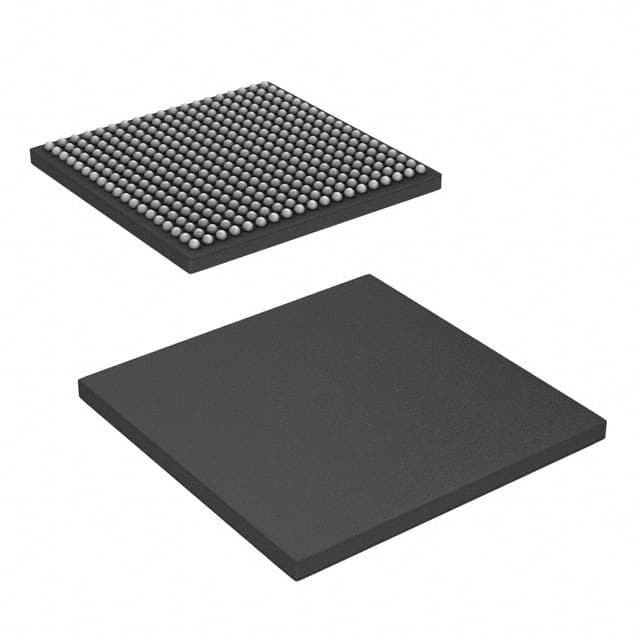
-
TMS320C6746EZWT4
Texas Instruments
.jpg)
-
TMS320C6713BPYP200
Texas Instruments

-
ADSP-BF537BBCZ-5A
Analog Devices Inc.
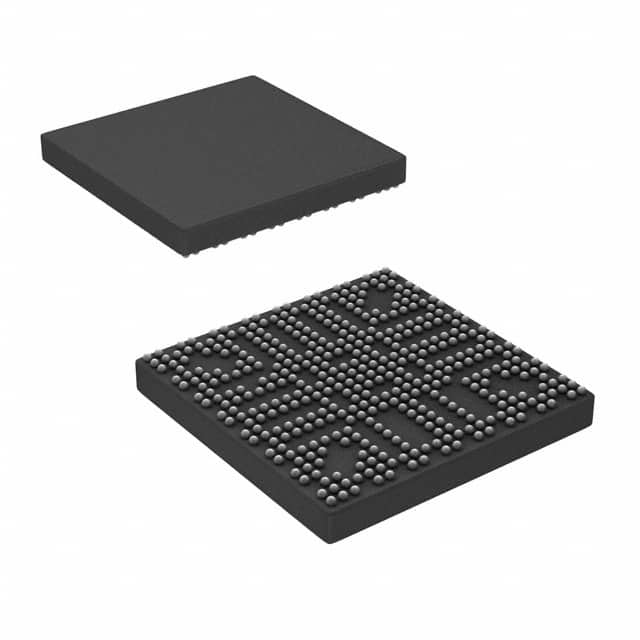
-
DM3730CUS
Texas Instruments


